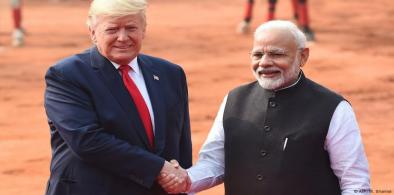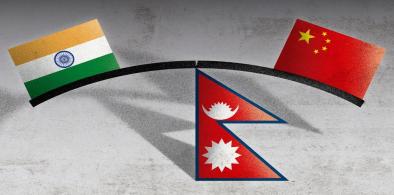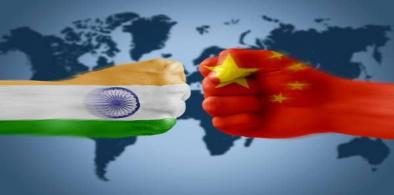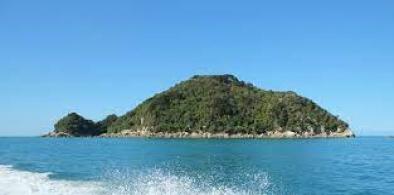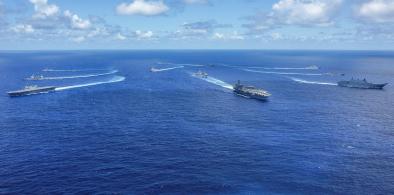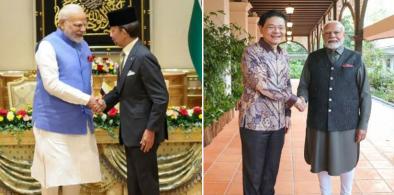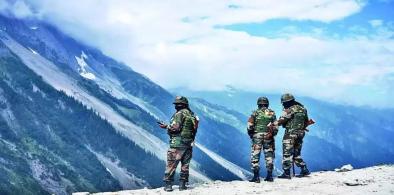One such opportunity lies in the realm of electric vehicles (EVs). Both India and China are on the cusp of transformative shifts in transportation, and the adoption of EVs could play a pivotal role in sustainable development and poverty alleviation in India. As India considers domestic EV manufacturing in collaboration with Chinese companies such as BYD, Leapmotor, and NIO, the potential for job creation, trade, and technology transfer is enormous. Chinese expertise in EV technology could help India meet its ambitious environmental goals while bolstering economic growth.

The Duet of Elephant and Dragon Can Bring Hope To Rest Of The World
It’s heartening to see that China has resumed the pilgrimage of Indian pilgrims to the sacred Mount Kailash and Lake Manasarovar in Southwest China’s Xizang Autonomous Region this year after a five-year break, and India has restarted the issuance of tourist visas to Chinese citizens suspended since 2020. Recently, several direct flights between the two countries have been restored. This development is expected to strengthen exchanges in people-to-people fields, as well as in trade, culture, and other areas.
How Not To Read The Dalai Lama's Statement On His Reincarnation
Despite China's might and backing, Gyeltsen Norbu has lacked legitimacy and following among Tibetans and Tibetan Buddhists elsewhere, and many suspect the 15th Dalai Lama appointed by Beijing will suffer the same fate. The Dalai Lama has emphasised that China must reach a resolution on the Tibetan question during his lifetime, and many fear that without his moral authority no solution will have widespread acceptance among the Tibetan people.
India-China Ties: Undefined Border Will Remain Driving Factor In Relationship
In reality not much has changed, the two sides lack a clear understanding of each other and misperception, nationalism and overall strategic mistrust have become the driving force. Even after much talk of building mutual understanding, in reality the gap continues not only among the governments but also among the people. In November 2025 Prema Wangjom Thongdok, a UK-based Indian woman from Arunachal Pradesh was harassed at Shanghai airport on her way to Japan. As per reports, Chinese officials claimed that, “Arunachal is not a part of India” and that she “should apply for a Chinese passport” as she was Chinese and not Indian.
How Putin’s Visit Signals A New Phase In Russia–India–China Trilateralism
The evolving Russia–India–China trilateral relationship presents a growing challenge to the United States and its aligned economies. More importantly, it represents a strategic opportunity for the three countries to coordinate policies, counter external economic coercion, and assert greater autonomy in pursuit of national interests. Putin’s visit to India thus goes beyond symbolism. It reflects a broader realignment in global power equations
A positive shift in India-China relations can be a global changer
In such a scenario, closer engagement with Beijing, does not mean that New Delhi needs to abandon its call for open sea lanes and unhindered movement through the South China Seas, or its support to QUAD, or participate in the naval exercises in the Pacific, or disown His Holiness the Dalai Lama, or break trade and other contacts with Taiwan, to name a few. Each is critical to crafting India's foreign and security policy towards China, the ASEAN, and the Indo-Pacific.
India poised for a larger role in Trump's foreign policy, Indo Pacific Strategy
Trump's strategic motivations would likely involve promoting a pro-American government in Dhaka, with Modi playing a role in shaping Bangladesh’s political future. This could open up avenues for joint Indo-US ventures in Bangladesh, possibly even enabling American companies to facilitate energy projects connecting Nepal’s hydropower resources through India to Bangladesh.
Why China has high stakes in a Buddhist archaeological site in Afghanistan
China has sought to grab this crucial mining opportunity due to the absence of major power competition in Afghanistan. Beijing's previous efforts were foiled but currently it is the only major power willing to make a bet on the Taliban government. In 2023, the official mining deal was signed between Afghan Deputy PM for Economic Affairs Abdul Ghani Baradar and Chinese Ambassador Zhao Xing. Both view this project as the start of a new era of economic and trade cooperation between the two countries.
After India-China thaw, Beijing draws Nepal in strategic embrace
Oli is scheduled to China after November 15. The primary discussion will likely be on speeding up the BRI as well as economic cooperation between the two nations. Beijing will do its best to draw Nepal deeper into its strategic sphere and further a joint approach in dealing with India to further China’s national interests.
Indian and China: Two different paths to economic progress
It is not possible for India to follow the China model of governance of less political freedom and more economic freedom. Yet, the present government may be well advised to implement pending reforms like land, labor, and judicial at the earliest.
Tonga's 'debt trap' illustrative of China's strategic stakes in South Pacific
The debt problem facing Tonga sheds light on the intricate nature of economic reliance and the broader geopolitical landscape in the South Pacific. Concerns regarding geopolitical control in a strategically significant region and the sustainability of debt have been highlighted by China's growing influence, not just in the region but beyond stretching to South Asia
US could play a larger role in shaping Bangladesh's future trajectory
This visit was strategically important for both the US and Bangladesh. For the US, it was an opportunity to solidify its presence in South Asia at a time when the region is becoming increasingly important in the broader context of US-China competition. Bangladesh, situated at the crossroads of South and Southeast Asia, plays a crucial role in the Indo-Pacific region.
Indian states have growing stake in a Free and Open Indo Pacific
India’s ties with South Korea, Japan and Taiwan which have grown in recent years have become even more important in the context of the current geopolitical and economic situation in the Indo-Pacific. India would also want to be one of the beneficiaries of the China+1 strategy being followed by many companies in East Asia.
Pakistan needs to play a larger role in the geopolitics of the Indian Ocean
The evolving Indo-Pacific strategy, led by the United States, has added a new layer of complexity to the geopolitics of the Indian Ocean. As the U.S. and its allies seek to counter China's influence in the region, India has emerged as a key partner in this strategic framework. However, this realignment has implications for regional stability, particularly for Pakistan
The Quad remains relevant in upholding Indo Pacific security
Quad does create an overarching arc of stability in the region, checking the expansion capacity of Beijing, which will in turn boost India’s regional ambitions that are mutually aligned with the Quad’s objectives.
Modi visits to Brunei, Singapore show India's commitment to Indo Pacific engagement
Modi marked a new chapter in his strategic geopolitical moves over the past few months since the start of his third term with visits to the region and to Ukraine. All these marked a new frontier for India’s power projection while sending a clear message to allies and adversaries that New Delhi has its own bargaining chips in pursuance of its strategic neutrality while ensuring the best returns for its national security and international interests.
With increased militarisation, is a PLA demobilisation possible in Ladakh?
Vacating the Kailash Range without linking it to PLA withdrawal from Depsang-Demchok was a strategic blunder, proving how easily China cons our negotiators. Our political hierarchy wouldn't know how poorly this decision was viewed by our units/soldiers
How China-inspired democratic model empowering Sri Lanka's local communities
Sri Lanka’s TEPES and PEC share many similarities with China’s whole-process democracy. Both nations are working closely to exchange experiences and collaborate on the implementation of these systems in Sri Lanka.
‘Axis of Upheaval’: China, Russia-led coalition threatens West-led global order
First, Russia is engaged in a war that marks Putin's point of no return in his effort to undermine NATO and the West—particularly the U.S.—pursuing a long-term confrontation. To better position Moscow for this conflict, Putin has effectively doubled down on relations with like-minded partners - China, Iran, and North Korea.







